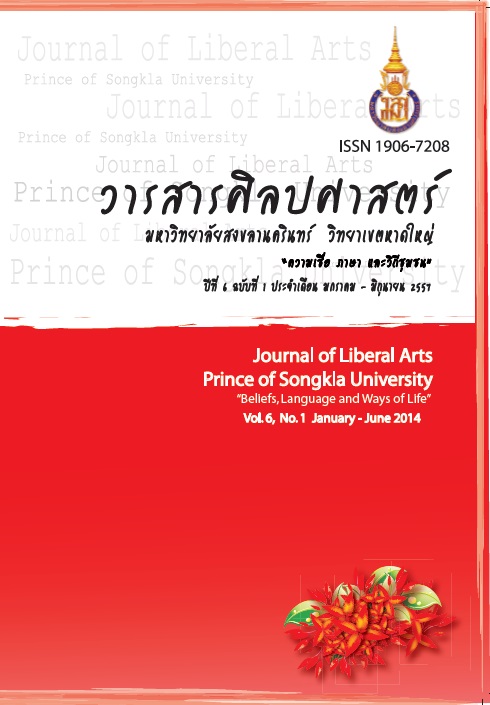A study of auspicious pictures and words of Chinese new year woodblock printings: A case study of Yangliuqing Village, municipality of Tianjin, people's republic of China
Keywords:
auspicious painting, auspicious wording, Chinese New Year woodblock printings, Yangliuqing Village, Chinese culturesAbstract
This study aimed to investigate paintings and auspicious words in Chinese New Year woodblock printings, a case study of Yangliuqing Village, Municipality of Tianjin, People’s Republic of China in order to learn the context of the pictures and auspicious words focusing on their sources and meanings, and to learn about the way of life in the pictures and auspicious words focusing on the viewpoints that reflect the Chinese way of life through their beliefs, traditions, and identities. The study employed the qualitative research method and collected data from documents and the field. The results of the study are presented using a descriptive approach and illustrations.
The results of the study revealed that the Chinese paintings and auspicious words with illustrations of deities, stories, and small children are related with Chinese culture and wisdom in terms of content and story as they can be reflected from the context and auspicious words in the paintings through their origins and meanings. The paintings are Chinese art with beautiful arrangement of the compositions of their contents. They can be produced by means of woodblock printing, handicraft or mixing painting techniques with handicraft and printing. The paintings can be outstanding with the depiction of joyful people at auspicious times in their colorful dresses and ornaments. Utensils, flowers, fruits and animals are all completed with details in the Chinese way of shape, proportions, patterns and colors that come with auspiciousness desirable to the Chinese reflecting their way of life, beliefs, traditions and identities that are all invaluable.
Downloads
Published
How to Cite
Issue
Section
License
Copyright (c) 2016 วารสารศิลปศาสตร์ มหาวิทยาลัยสงขลานครินทร์ วิทยาเขตหาดใหญ่ (Journal of Liberal Arts Prince of Songkla University Hat Yai)

This work is licensed under a Creative Commons Attribution-NonCommercial-NoDerivatives 4.0 International License.
The authors retain the copyright to their article but the Journal of Liberal Arts, Prince of Songkla University reserves the exclusive rights to first publication.






